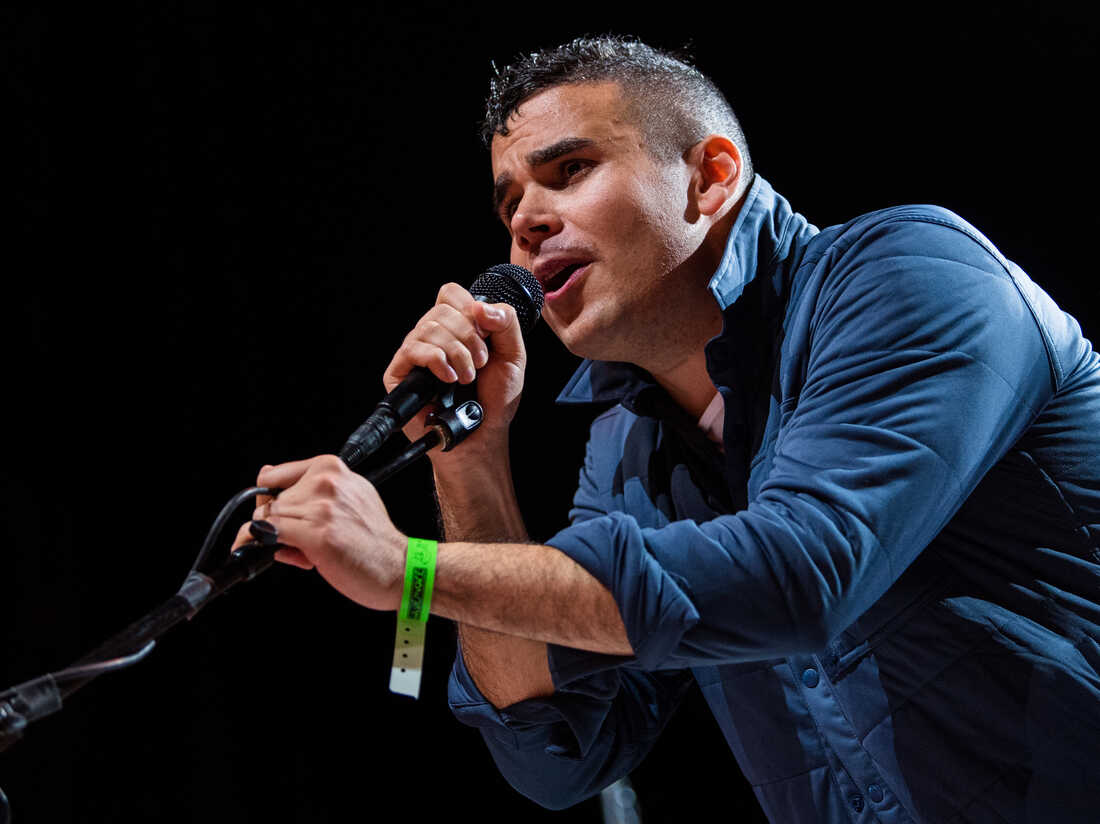

Adam Moss allowed NPR into a space only two other people have seen: his painting studio.
Adam Moss
Adam Moss
In a small brick building in the Lower East Side of Manhattan, you can find Adam Moss’s “den of torture.”
Prior to this interview, almost no one has been allowed in.
“Just my husband and my teacher. That’s it.” Moss said. “Two people in my entire life and I’ve had this thing for five years. So welcome.”
This space is less menacing than most dens of torture; there aren’t any medieval instruments of pain after all. Instead, the small, light-filled room overflows with brushes and palettes, and paintings of various sizes and stages of completion rest on every surface.

Adam Moss’ so-called “den of torture.” Instead of Medieval instruments of torture, he has paintbrushes and palettes.
Adam Moss
Adam Moss
When Adam Moss gave up his job as editor-in-chief of New York Magazine five years ago, he started painting. He loved it, but it was agonizing.
“I really wanted to be good, and it made the act of making art so frustrating for me,” said Moss. “This [studio] is where I come many days and wrestle with trying to make something.”
Trying to make something is exactly the subject of Adam Moss’s new book, The Work of Art: How Something Comes from Nothing.
“The book is called The Work of Art,” says Moss. “And that is kind of what it’s about.”
It’s about the work.

Adam Moss’ The Work of Art: How Something Comes from Nothing features interviews with more than 40 creatives about their process, from blank page to final product.
Penguin Press
Penguin Press
The book has 43 chapters, each one dedicated to a single artist, and their process of creating a single work. They come from a wide range of disciplines. There are poets, painters, chefs, sand castle sculptors and crossword puzzle makers.
And through this collection of interviews, the book tries to answer the questions: How does a sketch become a painting? How does a scribbled lyric become a song? How does an inspiration become a masterpiece?
The book is a visual feast, full of drafts, sketches, and scribbled notebook pages.

A sample of pages from chapter 9 of the book, which profiles poet and essayist Louise Glück.
Penguin Press
Penguin Press
Every page shows how an idea becomes a finished design.
In one chapter, Moss speaks with Amy Sillman, an abstract painter who Moss admires for her unique use of color and shape.
“Amy was also a dream subject for this project,” Moss writes. “Because to reach the finish line of most of her paintings, she paints dozens of paintings, or even more, each usually pretty wonderful.”
The chapter contains 39 images, demonstrating the full evolution from first draft to finished product of her work, Miss Gleason.
Each image is accompanied by a quote from Sillman, explaining what step that particular draft represented in her process.
In another chapter, Moss speaks with the musician Rostam, who describes the process of writing the song “In a River.”

Musician Rostam Batmanglij, pictured here performing in 2017, shared his songwriting process with Adam Moss.
Emma McIntyre/Getty Images
Emma McIntyre/Getty Images
For Rostam, the creative process occurred in large part on his iPhone, in a collection of draft lyrics written in the notes app, and melodies in recorded as voice memos.
Eventually, those notes and recording on his phone evolved into a completed song.
Rostam’s animation video for his song “In a River.”
YouTube
So, what is the key to creating a masterpiece? Moss did not find an answer. All of artists featured across the book are unique, and so are their creative processes.
However, Moss did point to some frequently shared traits.
One commonality Moss found was that many artists describe themselves as having ADHD.
“Whether they have ADHD or not, [they have] the elements that we associate with ADHD,” Moss said, describing a balance of distractedness and focus.
“You need to be distracted enough for your mind, for your imagination to go fishing, and you need to be focused enough to know what to do with it.”
Moss also found that his subjects consistently found ways not to let the fear of failure or mistakes prevent them from starting.
“They tried to get through that as quickly as possible and with as little thought as possible,” Moss said. “Many of them write in longhand, giving themselves explicit permission to fail.”
However, there was one trait between Moss’s subjects that was truly ubiquitous.
“They all have a compulsion, an obsession to make something. It gets into their system and they can’t let go of it,” Moss said, explaining that the vision or the final product is secondary to the process.
“The end product is not the point,” Moss said. “what they were consumed by, why they did what they did is because they were consumed by the work. “
 Print
Print













